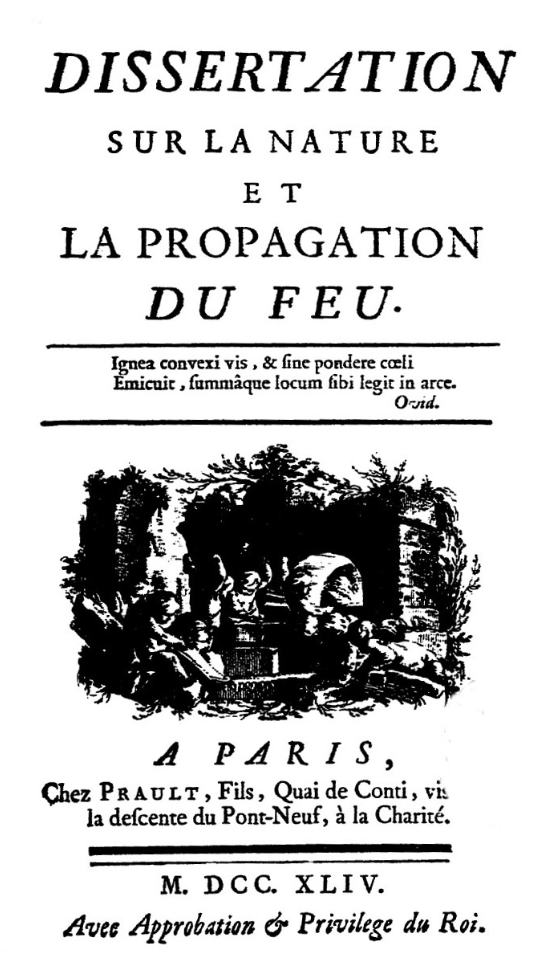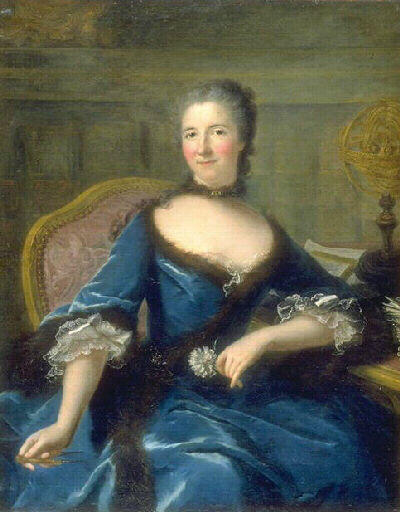Meet Émilie du Châtelet, the French socialite who helped lay the foundations of modern physics
She improved on Newton's work and outclassed Voltaire
Matteo Farinella
There’s a thread of familiarity that underlies the life of Gabrielle-Émilie Le Tonnelier de Breteuil, Marquise du Châtelet (often known as Émilie du Châtelet) – juggling multiple identities and responsibilities. Mathematician, physicist, French aristocrat, manager of household, wife, mother, and philosopher, du Châtelet lived her short life to its fullest. She was also a pioneering science communicator, on a mission to make the greatest works of her time accessible. Her masterpiece? A translation of Newton’s Principia.
Early years
Du Châtelet was born in 1706 to a family of French aristocrats, minor nobility in King Louis XIV’s court. Records of her childhood are contradictory, and many may be more myth than fact. It is clear, though, that she was interested in many “unfeminine” subjects. Home-educated, she learned multiple languages, including German, Greek, Latin, and Italian, she was also tutored in fencing and riding, but she gravitated most to science and math. Her family’s position helped foster this interest, as her father held frequent salons attended by Europe’s top scientists and mathematicians. She was dedicated to her studies, and creative in finding resources – she used her mathematical talents to succeed in gambling and used her profits to buy textbooks and lab supplies.
Still, du Châtelet spent her early years in much the same way you might expect for a French noblewoman. She married at 18, in an arrangement, to the much-older Florent-Claude, Marquis Du Châtelet-Lomont, a military man, and spent the first years of her marriage as a socialite. During this time, she had her first few children.
While pregnant with her third child, she became interested in math and physics again, and soon after she gave birth in 1733, she headed back to Paris. There, she sought out the mathematician Pierre Louis Moreau de Maupertuis, who was an eminent scholar on Newton’s mechanics. This was the beginning of her transformation from socialite to physicist.

Matteo Farinella
Rise to prominence
While du Châtelet was an eager and talented pupil, and she would forever claim Maupertuis as her great teacher, his interest in teaching her was short-lived. In a couple years time, she turned to his student, Alexis-Claude Clairaut, a rising superstar. It’s likely that his algebra and geometry textbooks were written specifically for her.
Her time in Paris also brought her in contact with her most famous lover – the philosopher Voltaire. When he had to flee Paris for his writing on England, which the French royalty and church took as a threat, he went to du Châtelet’s chateau in Cirey-sur-Blaise. Her husband apparently didn’t mind; Voltaire and du Châtelet were together for the next 15 years, all the while building a library and running scientific experiments. Not only was Voltaire her partner, but he also was her number one supporter: he credits her as his muse and being integral to his own understanding of Newtonian mechanics. Still, Voltaire appears stuck in the conventions of his time – while he sings her praises in his book Elémens de la Philosophie de Neuton, she isn’t credited as an author.

Du Châtelet's secret essay
But, du Châtelet wasn’t one to be held back by convention. While collaborating with Voltaire on experiments on the nature of fire, she disagreed with one of his conclusions and secretly wrote an anonymous essay on the subject for the French Academy of Science’s contest. While she didn’t win, her article was one of five top entries that were published together in a collection – right alongside Voltaire’s own. This made her the first woman published by the French Academy. At the time, though, her eminence as a scholar was so renowned that no one batted an eye. Copies of her next famous publication, Institutions de Physique, a synthesis of Newton, Descartes, and Leibniz’s competing views on metaphysics were spread through continental Europe and earned her membership into the Academy of Sciences of the Institute of Bologna. And it’s no wonder – her book was a bridge between old ways of thinking from natural philosophers and modern scientific approaches, and as such, was integral to the start of the Enlightenment. While many consider this book her magnum opus, her most enduring achievement, and also her last, was yet to come.
Translating Newton’s Principia
After the success of her previous publications, du Châtelet found herself looking for a new challenge. She decided to take on Newton’s Principia and its accompanying commentaries. While Newton’s text is famous – and still is the fundamental basis of our understanding of physics and calculus – it was inaccessible to all but the most elite at the time, since it was written in rambling Latin. Du Châtelet’s mission was to make this text easily readable by any French speaker.
Her resulting work is more than a mere translation: over several chapters, it translates and clarifies Newton in a brilliantly succinct fashion and grows from a plain language explanation of Newton’s work that any French-reader could grasp, to a detailed, mathematical treatise for experts. Writing sporadically over four years, du Châtelet added in detailed proofs of ideas Newton mentioned offhand and integrates the latest works of her contemporaries, which built on and supported Newton’s ideas.
Yet, it would be ten years after its completion before the public would see her masterpiece. She had finished her writing in a frenzy, working until the wee hours of the morning, while pregnant with her fifth child, by Jean François de Saint-Lambert (she and Voltaire had separated). She was 42 – and at the time, a pregnancy at that age was a death sentence. She sent her manuscript to her teacher, Clairaut, for checking, and then died from complications a few days after the birth. Her daughter, Stanislas-Adélaïde, died within two years.
Over the next few years, Clairaut was distracted with his own works. He finally returned to du Châtelet’s manuscript in 1758, amid the buzz about Halley’s Comet’s return and the controversy over whether Clairaut's calculations for its orbit were correct. It was published with a loving, though misguided in its treatment of du Châtelet, preface by Voltaire.
Du Châtelet’s Legacy
In the prefaces and dedications to her works (her correspondence was destroyed after her death), du Châtelet writes about the struggle to be both a woman of high society and a renowned scholar – wishing for less time on housekeeping, and more on her studies. She expresses self-doubt and a fear of exclusion. She advocates for women’s education: “This education would render enormous service to the entire human race. Women would be enriched by it and men would find new respect for them. Male–female interaction, which too often polishes manners while weakening and shrinking minds, would then rather serve to expand their knowledge.” Yet, even Voltaire took her as an exception, a prodigy, rather than an example of what women can be.

It’s no surprise that, under this prevailing attitude, du Châtelet’s works were slowly forgotten, and the collective memory typically reduces her to her sexual affairs. Yet, du Châtelet’s translation is still the French-language standard to this day, and her scientific works certainly helped lead to the acceptance of Newton’s writings – helping to lay the foundation of modern physics.